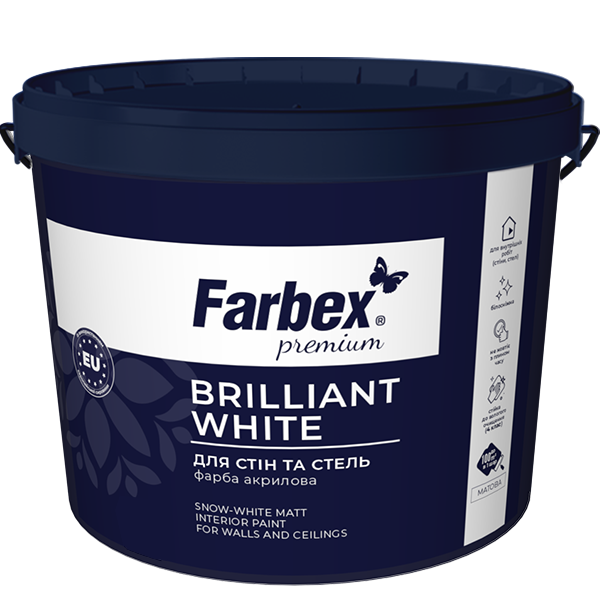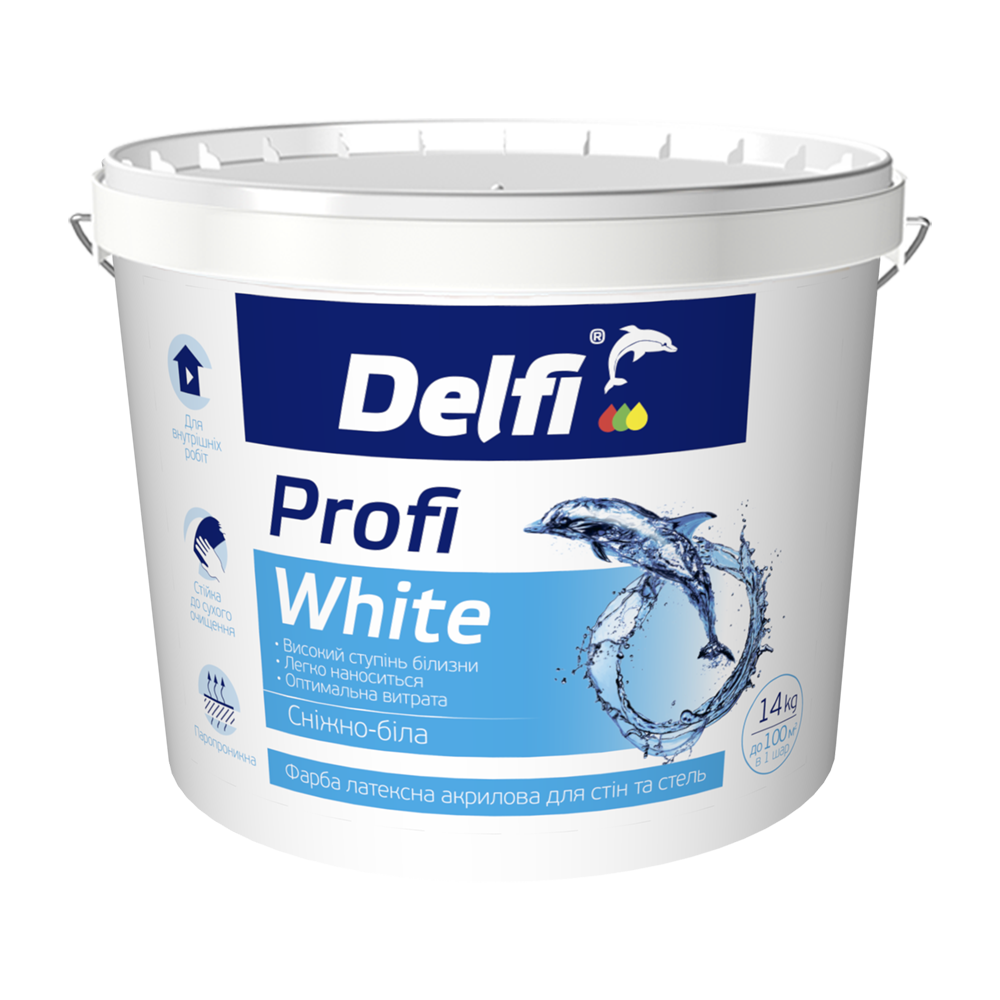A paint for walls is a paint, which was designed taking into account basic characteristics required for walls coating.
Basic characteristics for the paint for walls
Whiteness
One of the key features of the paint for walls is its high level of whiteness. A high level of whiteness helps visually enlarge the space and make the premise lighter. When you choose the paint for walls, you should take into account this parameter, because it influences how the room looks like and the atmosphere in the room.
Splashing
Quality paint doesn’t splash when you apply it on walls. In their turn, non-quality paints splash a lot creating an inconvenient working atmosphere.
Covering ability
One more key feature is the covering ability of paint. This feature determines how effectively the paint covers a previous coat of paint or color on the wall. It is important to choose the paint with high covering ability, especially if you work with dark or non-homogeneous surfaces.
Application rate
The other important aspect is the application rate. It determines, how much paint you need to coat a certain area of the wall. Correct calculation of the application rate helps you to avoid abnormal waste of the product and provide a homogeneous coating. Choose the paint with an optimal application rate for an effective use of resources.
How to choose a paint for walls
Choosing the paint for walls is an important stage. Take into account peculiarities of the premise, lighting and your expectations. Pay attention to the brands, which are recommended by the market. Don’t forget about your financial capacity. But remember, the quality paint will be not the cheapest one. Cheap paints for walls usually have a bad covering ability and loose whiteness very quickly and the wall becomes yellowish.
If you have difficulties choosing a paint, then you can ask our technician, who will consult you and help with the right choice of paint.
Color of the wall
One more trend in the wall design is the use of colors. Instead of traditional white, brave colors can add a unique and stylish look to your premise. Colors for the wall shall be in harmony with other elements of the interior. Colorful walls are not only a trend in design but also a way to create a unique and atmospheric interior. Colorful walls have an old history, which amounts to hundreds of years. They appeared as a trial to add an esthetic look to the interior and express individuality.
How to apply the paint on the wall
Before starting the application it is important to choose the right tools. The basics of them are a roller and a brush. Choose a roller with a medium-length pile, because it helps to spread homogeneously the paint. Use the brushes to coat the corners and details.
Prepare the working place before starting an application. Protect the floor with polyethylene film or with paper, to avoid drops of paint on it. We also recommend covering furniture and other parts of the interior, to protect them against paint splashes.
Start applying from the corners and framing with a brush for the precise outline. Then start applying the main area using the roller. Move in one direction, trying to avoid too thick coat and stretched paint marks.
For more detailed directions for the paint for walls, you can read in descriptions under every paint or ask our technician for a consultation.
The most frequent mistakes, when coating the walls
- The surface is not prepared well – not clean enough before coating;
- Wrong choice of paint – using an unsuitable paint for coating the walls;
- Wrong applying technique – applying is not homogeneous or too thick.
Tips about coating the walls from a professional
Preparing the surface: Make sure, that the wall is clean of dust, grease and other dirt. Use sandpaper, if necessary, to remove defects on the surface. Well-prepared surface is a guarantee of a quality coating.
Choice of a correct paint: Choose a paint, which is intended for coating the walls. It is important to understand the peculiarities of the premise like humidity and lighting.
Use of a primer: Use a primer before coating. It helps to improve the adhesion of the paint to the surface and provides a homogeneous application of the paint.
Correct tool: Choose tools, that correspond to your needs. The roller helps to spread the paint evenly, and the brush allows to get accuracy in the places, which are difficult to reach. We recommend using an extender for the handle of the roller for convenient work.
Apply several thin coats: Instead of applying one thick coat, apply several thin coats. It helps to avoid uneven coated spots and stains.
Protection against splashes: Protect near areas against paint splashes using film or paper. This saves you time for cleaning.
Take into account humidity and temperature: Choose a time for coating the wall with optimal conditions. High humidity can increase the drying period of paint, the low humidity can affect its distribution on the surface.
Check the quality of lighting: Make sure, that the lighting in the premise corresponds to conditions when you check the result of the coating.


